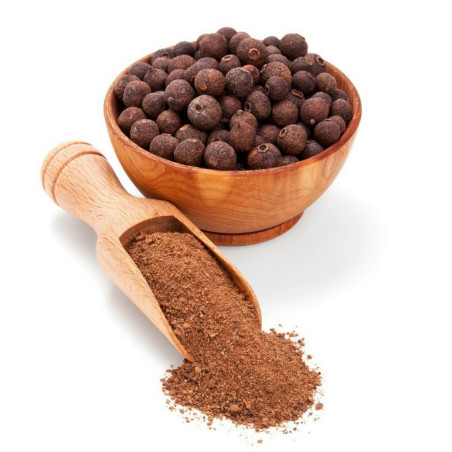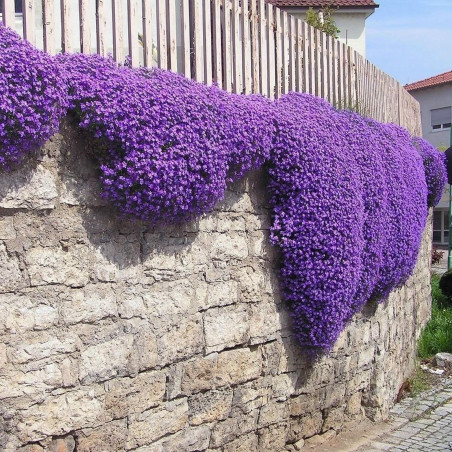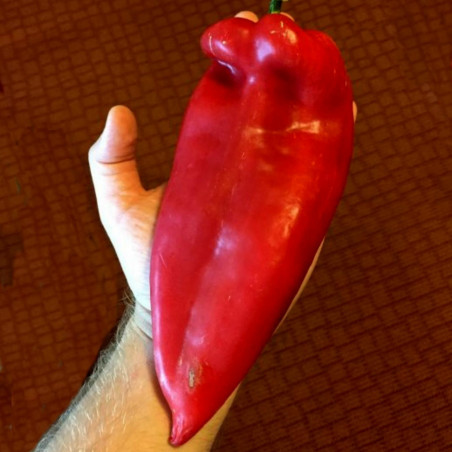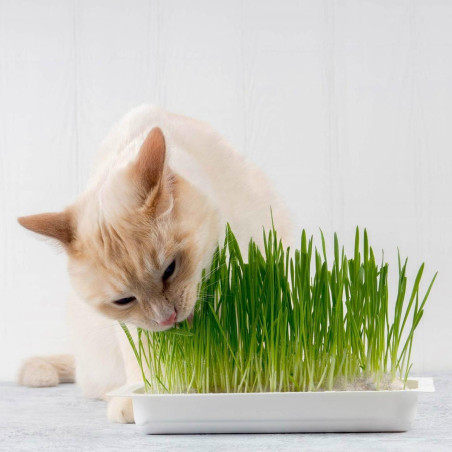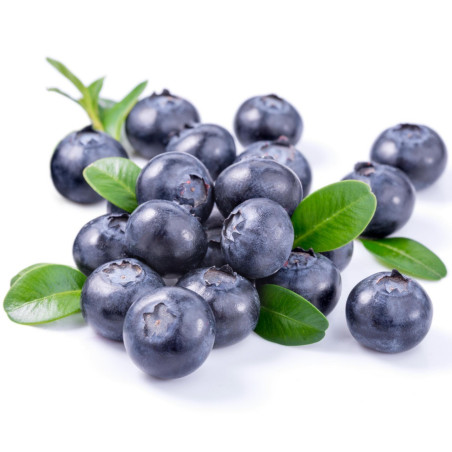
Wild Strawberry Seeds RUGIA (Fragaria vesca)
Wild Strawberry Seeds ‘’RUGIA’’ (Fragaria vesca)
Price for Package of 20 seeds.
Fragaria vesca, commonly called wild strawberry, woodland strawberry, Alpine strawberry, Carpathian Strawberry, European strawberry, or fraisier des bois, is a perennial herbaceous plant
Wild Strawberry Seeds ‘’RUGIA’’ (Fragaria vesca) Fruiting From Spring Until The Frosts
Price for Package of 20 seeds.
Remontant variety (without moustache), very productive whole season – from late spring until frosts. Berries are bright red, medium size, very fragarant and tasty. Variety suitable for use as fresh or for industrial use.
WIKIPEDIA:
Fragaria vesca, commonly called wild strawberry, woodland strawberry, Alpine strawberry, Carpathian Strawberry, European strawberry, or fraisier des bois, is a perennial herbaceous plant in the Rose family that grows naturally throughout much of the Northern Hemisphere, and that produces edible fruits.
Description
Five to eleven soft, hairy white flowers are borne on a green, soft-hairy 3–15 centimetres (1.2–5.9 in) stalk that usually lifts them above the leaves. The light-green leaves are trifoliate (in threes) with toothed margins. The plant spreads by means of runners (stolons).
Taxonomy
Vilmorin-Andrieux (1885) makes a distinction between wild or wood strawberries (Fragaria vesca) and alpine strawberries (Fragaria alpina), a distinction which is not made by most seed companies or nurseries, which usually sell Fragaria vesca as "alpine strawberry".
Under wild or wood strawberry, Vilmorin says:
It has seldom been seen in gardens since the introduction of the Red Alpine Strawberry. ... Wood Strawberry possesses a quite particular perfume and delicacy of flavour. 2,500 seeds to the gramme.
Under alpine strawberry, Vilmorin says:
A very different plant to the Wood Strawberry, and distinguished by the greater size of all its parts — the fruit in particular — and especially by the property (which is particular to it) of producing flowers and fruit continuously all through the summer. ... The fruit has nearly the same appearance and flavour as that of the Wood Strawberry, but is generally larger, longer, and more pointed in shape. The seed is also perceptibly larger and longer. A gramme contains only about 1,500 seeds.
Subspecies
Ecology Fragaria vesca ssp. americana (Porter) Staudt- Fragaria vesca ssp. bracteata (Heller) Staudt
- Fragaria vesca ssp. vesca L.
- Fragaria vesca ssp. semperflorens L.



Typical habitat is along trails and roadsides, embankments, hillsides, stone- and gravel-laid paths and roads, meadows, young woodlands, sparse forest, woodland edges, and clearings. Often plants can be found where they do not get sufficient light to form fruit. In the southern part of its range, it can only grow in shady areas; further north it tolerates more sun.[7] It is tolerant of a variety of moisture levels (except very wet or dry conditions).[7] It can survive mild fires and/or establish itself after fires.[7]
Although F. vesca primarily propagates via runners, viable seeds are also found in soil seed banks and seem to germinate when the soil is disturbed (away from existing populations of F. vesca).[7]
Its leaves serve as significant food source for a variety of ungulates, such as mule deer and elk, and the fruit are eaten by a variety of mammals and birds that also help to distribute the seeds in their droppings.[7]
Genomics
| NCBI genome ID | 3314 |
|---|---|
| Ploidy | diploid |
| Number of chromosomes | 14 |
| Year of completion | 2010 |
The alpine strawberry is used as an indicator plant for diseases that affect the garden strawberry. It is also used as a genetic model plant for garden strawberry and the family Rosaceae in general, due to its:
- very small genome size
- short reproductive cycle (14–15 weeks in climate-controlled greenhouses)
- ease of propagation.
The genome of Fragaria vesca was sequenced in 2010.[8]
All strawberry (Fragaria) species have a base haploid count of seven chromosomes; Fragaria vesca is diploid, having two pairs of these chromosomes for a total of 14.



History, cultivation and uses
Evidence from archaeological excavations suggests that Fragaria vesca has been consumed by humans since the Stone Age.[9]
Woodland strawberry fruit is strongly flavored, and is still collected and grown for domestic use and on a small scale commercially for the use of gourmets and as an ingredient for commercial jam, sauces, liqueurs, cosmetics and alternative medicine.
In Turkey, hundreds of tons of wild fruit are harvested annually, mainly for export.[10] The Ottoman strawberry (also known as the Arnavutköy variety)[11] was once cultivated in large quantities in the Arnavutköy neighbourhood of Istanbul. It is also grown extensively near the town of Karadeniz Ereğli in Zonguldak province, Turkey. A festival to celebrate the Ottoman strawberry is held at Karadeniz Ereğli in June each year.[12]
Most of the cultivated varieties have a long flowering period (and have been considered by botanists as belonging to Fragaria vesca var. vesca ssp. semperflorens). They are usually called alpine strawberries. They either form runners or multiple crowns in a cluster, fruit over a very long period with larger fruit than the common wood strawberry, and are usually propagated by seeds or division of the plants. The type in cultivation is usually everbearing and produces few runners. Plants tend to lose vigour after a few years due to their abundant fruiting and flowering with final decline caused by viral diseases.[13] Large-fruiting forms are known since the 18th century and were called "Fressant" in France.[14] Some cultivars have fruit that are white or yellow when fully ripe, instead of the normal red.
Cultivars that form stolons are often used as groundcover, while cultivars that do not may be used as border plants. Some cultivars are bred for their ornamental value. Hybrids, Fragaria × vescana, have been created from crosses between woodland strawberry and garden strawberry. Hybrids between the woodland strawberry and the European species Fragaria viridis were in cultivation until around 1850, but are now lost.[15]
Alpine strawberry has an undeserved reputation among home gardeners as hard to grow from seed, often with rumors of long and sporadic germination times, cold pre-chilling requirements, etc.[citation needed] In reality, with proper handling of the very small seeds (which can easily be washed away with rough watering), 80% germination rates at 70 °F within 1–2 weeks are easily achievable.
Alpine strawberries are sometimes included as edging plants in herbaceous borders.
Garden varieties currently in cultivation
- Seed-propagated
- Rügen, the first modern cultivar, i.e., runnerless, everbearing and large fruited — originating from Castle Putbus in Germany, first offered 1920 by the strawberry grower Emil Spangenberg from Morsleben.
- Alexandria, first offered 1964 by George W. Park Seed Co., USA
- Baron Solemacher, first offered 1935 by F. C. Heinemann, Germany
- Weisse Solemacher (white fruited) first offered by F. C. Heinemann
- Golden Alexandria (golden foliage).
- Cultivars
Forms with runners are still found in old gardens.
- Quarantaine de Prin, France; commercially important before World War I, but now almost extinct; maybe identical to the variety Erigée de Poitou which was still offered around 1960.
- Blanc Amélioré, Great Britain; white-fruited; it is doubtful if the clone in circulation today is identical to the historical variety from around 1900 because of its non-everbearing habit; nevertheless a good variety with rather large, sometimes monstruous fruit of the Fressant type.
- Illa Martin, Germany; sold as an ornamental, white-fruited. Red achenes have been reported but have not been found. Most plants in circulation not true to name.
- Gartenfreude, Germany; large-fruited form, sometimes very large monstrous fruit of the Fressant type.
Curious mutations have arisen and are sometimes grown by plantsmen and other connoisseurs of the unusual:
- Monophylla (“Strawberry of Versailles”; has one large leaflet instead of the normal three leaflets)[20] - Vilmorin-Andrieux (1885) stated as being raised by Duchesne.
- Multiplex (double flowered; sets less and smaller fruit)
- Muricata (“Plymouth strawberry”; the flowers are composed of numerous small, leafy bracts; the fruit are similarly spiky).
| Sowing Instructions | |
| Propagation: | Seeds |
| Pretreat: | 0 |
| Stratification: | 30-60 days |
| Sowing Time: | all year round |
| Sowing Depth: | Needs Light to germinate! Just sprinkle on the surface of the substrate + gently press |
| Sowing Mix: | Coir or sowing mix + sand or perlite |
| Germination temperature: | 20-25°C |
| Location: | bright + keep constantly moist not wet |
| Germination Time: | 1 - 8 weeks |
| Watering: | Water regularly during the growing season |
| Copyright © 2012 Seeds Gallery All Rights Reserved. | |
Sowing: Outdoors in spring or in autumn (could be sown all the season). The seeds is recommended to hold in -5˚C/23˚F temperature (in refrigerator) for 2 months before sowing.
Seedlings is ready to transplant about 30 – 30 days after sowing. The space must be left between plants – 90 x 40 cm/35.4 x 17.7 inch.
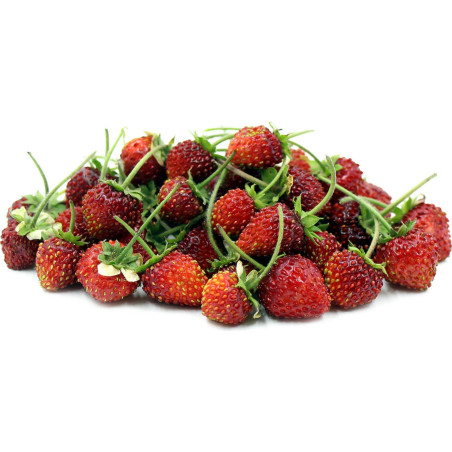

Your review appreciation cannot be sent
Report comment
Report sent
Your report cannot be sent
Írd meg véleményedet
Review sent
Your review cannot be sent
🌍 Globális szállítás az EU-ból
Világszerte szállítunk az Európai Unióból ajánlott küldeményként, átvételi visszaigazolással.
📦 Csomagkövetés
A nyomkövetési számot fiókodba belépve, a Rendeléstörténet > Részletek menüpont alatt találod meg.
Globális nyomkövetés: 17Track
RGxxxxxxHR típusú számokhoz: Posta.hr követés
🕒 Megjegyzés: a nyomkövetési adatok a feladás után legkésőbb 24 órával jelennek meg.
⚠️ Fontos tudnivalók
Utánvét nem elérhető.
Rendszeresen ellenőrizd a spam/junk mappát az e-mailjeid között a fontos értesítések miatt.
Kérdéseidet kizárólag a weboldalunkon található kapcsolati űrlapon keresztül küldd el!
Az e-mailben közvetlenül küldött üzenetek előfordulhat, hogy nem érkeznek meg.
📱 Megrendeléshez szükséges adatok
Mindig add meg a mobiltelefonszámodat az országkóddal együtt!
Példa: +36 20 123 4567
🚚 Szállítási feltételek
A nyomon követett csomagok átvételéhez aláírás szükséges.
Nem szállítunk ki:
postafiókba
szomszédhoz
ha nem vagy otthon a csomag átvételéhez
📬 Ha postafiók címet adsz meg, és a csomag elveszik vagy nem elérhető, nem jogosultsz visszatérítésre.
↩️ Visszaküldés és újbóli szállítás
Ha a csomag bármilyen okból visszakerül hozzánk:
Viselned kell a visszaküldési díjat (2 €)
És az újraküldés költségét
⏱ Késések és csomagkövetés
Ha a nyomkövetés szerint a csomag még a feladónál van, az azt jelenti, hogy úton van.
Fordulj a helyi postahivatalhoz a nyomkövetési számmal a legfrissebb információkért.
Nem vagyunk postai szolgáltató, és nem tudjuk helyetted követni a csomagot.
Nem vállalunk felelősséget a kézbesítés idejéért.
🔍 Elveszett csomag esetén vizsgálatot csak a feladás után 30 nappal tudunk kezdeményezni.
✈️ Szállítási opciók
| Szállítás típusa | Feldolgozási idő | Biztosított | Lehetséges késések | Megjegyzések |
|---|---|---|---|---|
| Normál | 7–10 munkanap | ❌ | 7–14 nap | Alapértelmezett szállítás |
| Elsőbbségi | 1–7 munkanap | ❌ | 3–10 nap | Prioritásos feldolgozás, nem garantált gyorsabb kézbesítés |
| Biztosított | 1–7 munkanap | ✅ | 3–10 nap | Elvesztés esetén visszatérítés (150 €-ig) |
🕒 Várható kézbesítési idő:
Az EU-n belül: 3–20 nap
Világszerte: 5–30 nap
Példák USA-ba: 27, 22, 19, 17, 13 nap
💳 Fizetési módok
💶 Banki átutalás (SEPA / IBAN / SWIFT-BIC)
A befizetés megjegyzésében minden esetben tüntesd fel a rendelési számot (pl. SGS-19811702).
Ha hiányzik a referencia, előfordulhat, hogy nem tudjuk hozzárendelni a fizetést, ami késedelmet vagy rendelés törlést okozhat.
A megrendelés automatikusan törlődik, ha a fizetés nem érkezik meg 7 napon belül.
🅿️ PayPal
Csak euróban (EUR) történő fizetést fogadunk el PayPal-on keresztül.
Fizetés közben állítsd át a pénznemet euróra.
💳 Bankkártyás fizetés
Elfogadott kártyák: Visa, MasterCard, American Express, CB, Diners Club, Discover, China UnionPay, JCB és egyéb kártyák.
💡 A tranzakciós díjakat a vásárló viseli.
Kérjük, küldd el a fizetés adatait a gyors rendelésfeldolgozás érdekében.
📅 Egyéb tudnivalók
Szombaton és vasárnap nem dolgozunk, nem küldünk ki rendeléseket.
Mindig olvasd el a weboldalunkon található fontos értesítéseket megrendelés előtt (ünnepi időszakok, speciális feltételek stb.).
📫 Kérdéseiddel kizárólag a weboldal kapcsolati űrlapját használd!
Az e-mailen érkező megkeresések nem kerülnek feldolgozásra.
Related Products





